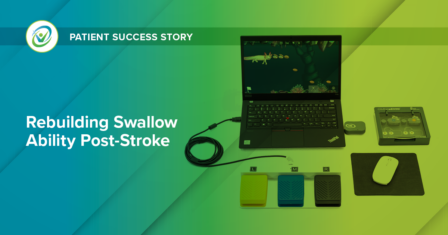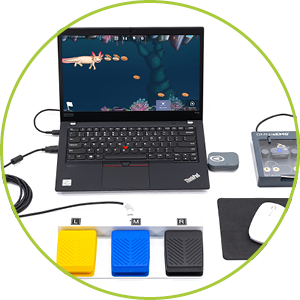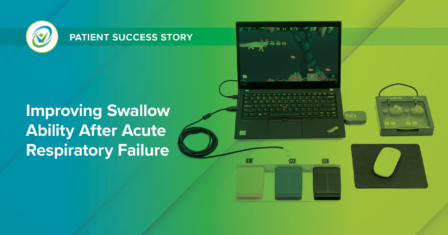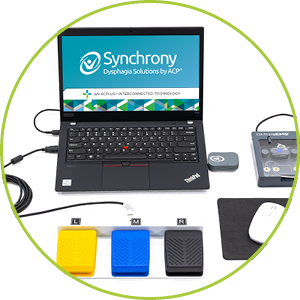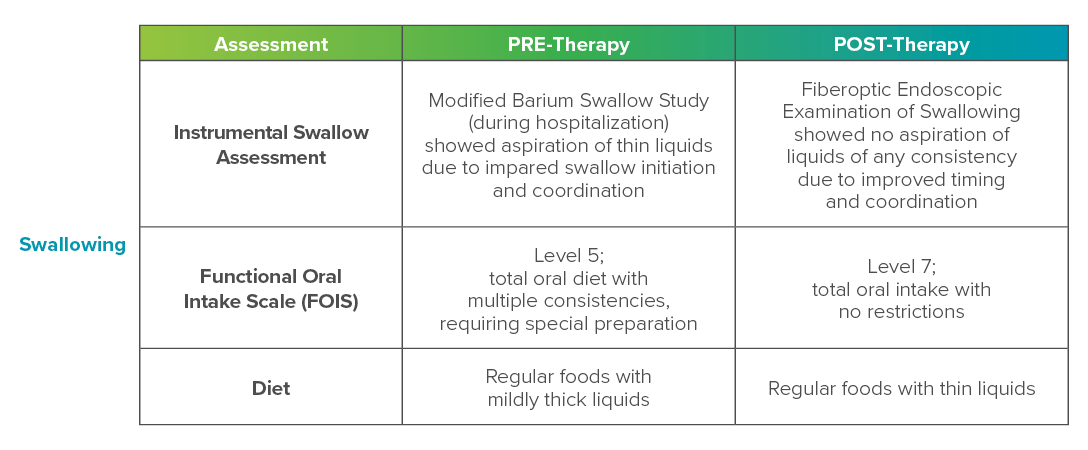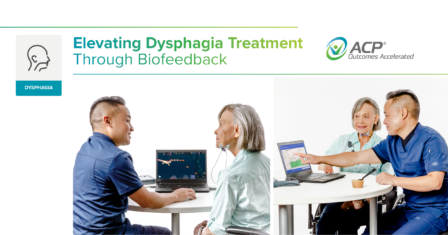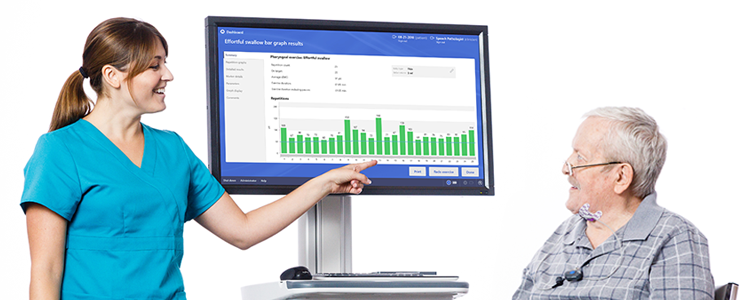After experiencing a stroke that resulted in hospitalization, this 65-year-old patient was admitted to a skilled nursing facility for rehabilitation services. His swallow initiation was inconsistent, and he had difficulty managing his secretions, ultimately being diagnosed with oropharyngeal dysphagia (difficulty swallowing). He enjoyed a regular diet before his stroke, but because he could not take any food or liquid by mouth, a feeding tube was placed.
Therapy Protocol
Speech Therapy
- 5x/week x 3 weeks
Synchrony Dysphagia Solutions by ACP® with OmnisEMG Biofeedback
- Typical swallows with ice chips for swallow initiation using Trace Display and Bow and Arrow virtual reality (VR) representation of muscle movement
- Effortful swallows with nectar thick consistency and progressive challenge with increased viscosity and volume to improve swallow strength using Bar Graph VR representation
Additional Interventions
- Thermal stimulation to facilitate swallow initiation
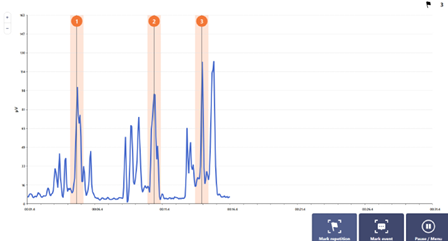
Trace Display

Bow and Arrow
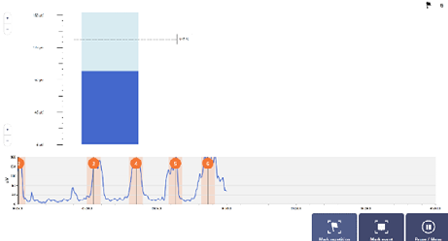
Bar Graph
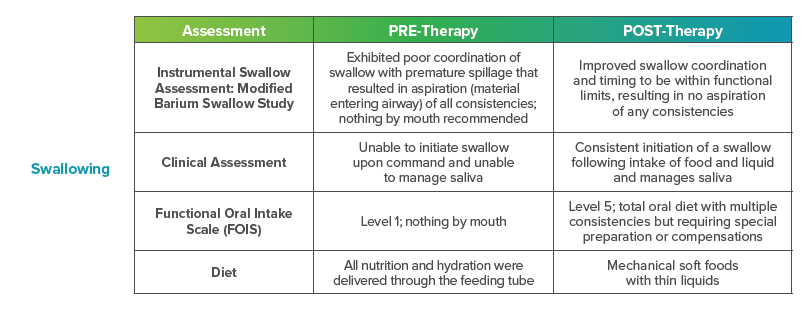
This patient is thrilled with the outcome of his therapy. He had this to share about his treatment using Synchrony:
Thank you for everything you did! I can’t wait to get home and eat food again.
Patient
Improve Swallowing with Advanced Biofeedback
Ready to revolutionize your approach to dysphagia therapy? Discover how Synchrony Dysphagia Solutions by ACP® can transform patient outcomes with its innovative combination of sEMG and VR technology.
MRK-BLOG-020
After experiencing a stroke that led to hospitalization, this 65-year-old patient was admitted to a skilled nursing facility for rehabilitation services. His swallow initiation was inconsistent, and he had difficulty managing his secretions. As a result, he was diagnosed with oropharyngeal dysphagia (difficulty swallowing), and a feeding tube was placed. Learn how his speech therapy team utilized Synchrony Dysphagia Solutions by ACP® to improve his swallow coordination and help him return to an oral diet.

